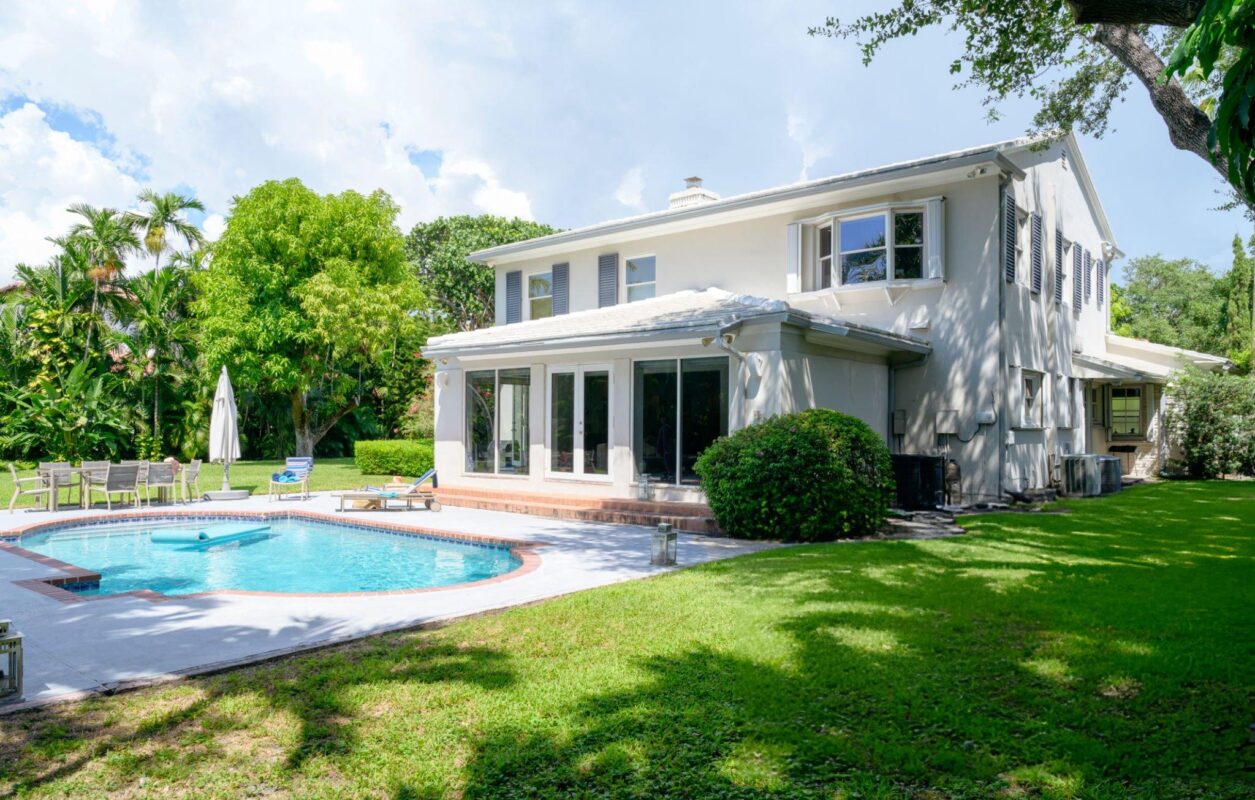Algae growth in pools can be a pesky issue for pool owners, particularly in San Diego where the sunny climate creates a prime environment for algae to thrive. When algae invades, it can turn a refreshing swim into a murky chore. Algae not only affects the look of your pool but can also create slippery surfaces and even clog filters if not managed properly. While algae can appear to be an ever-present threat, there are proactive steps one can take to keep it at bay.
One effective way to combat algae growth is through strategic low maintenance pool landscaping. By choosing the right plants and landscaping techniques, pool owners can significantly reduce the likelihood of algae taking hold. Not only does this enhance the pool’s beauty, but it also cuts down on the time and effort spent on pool maintenance. Let’s take a closer look at understanding and combating algae growth through smart landscaping choices.
Understanding Algae Growth
Before diving into solutions, it’s important to understand what algae are and why they can become a problem. Algae are simple plants that thrive in wet environments, and they can come in green, yellow, or even black varieties. Pools provide an ideal habitat for algae due to their moisture-rich environment. A few factors contribute significantly to their growth:
– Sunlight: Algae require light to grow, and the abundant sun in San Diego can accelerate their development.
– Poor Circulation: Stagnant water becomes a breeding ground, so poorly circulated pools are more susceptible.
– Organic Debris: Leaves and debris in the pool can introduce nutrients that algae thrive on.
The impact of algae isn’t just aesthetic. Algae can create slippery surfaces around the pool, posing a safety hazard. Moreover, it can lead to clogged filters and can make keeping the water balanced a more challenging task.
Choosing the Right Plants
Selecting the right plants is crucial when aiming to prevent algae through landscaping. Opt for plants that require minimal water and maintenance, especially those well-suited to San Diego’s climate. Look for plants like jasmine, lantana, and lavender that are both drought-tolerant and attractive. These plants not only add beauty but also contribute to a cleaner, healthier pool environment.
There are several benefits to choosing such plants:
– Low Water Use: Drought-resistant plants require less hydration, meaning less water runoff into your pool.
– Debris Prevention: Carefully selected plants are less likely to shed excessive leaves or debris.
– Aesthetic Appeal: These plants enhance the beauty of the surrounding, creating an inviting pool area.
By strategically incorporating these plants around a pool, one can create a barrier that keeps algae-inducing factors out of the water. Additionally, these choices are not only environmentally friendly but also cost-effective in the long run. With a bit of planning, your pool area can become both a visual delight and a much less labor-intensive space to care for.
Landscaping Techniques to Prevent Algae
For those looking to maintain a pristine pool landscape, incorporating smart techniques can drastically reduce algae problems. Start by placing plants strategically to minimize debris and the nutrients that algae love. It’s best to position plants a bit away from the pool’s edge to prevent fallen leaves and flowers from getting into the water. This will help keep your pool clean and reduce the frequency of manual cleaning.
Creating shade around the pool is another effective approach. By planting trees or structures that can block direct sunlight, you reduce the light availability that algae need to grow. This doesn’t mean keeping your pool in the dark but carefully balancing light and shade. Just imagine reading a book poolside under the light-filtered shade of a tree; it’s not just relaxing, it’s algae smart.
The use of mulch and ground covers around the pool area also plays a significant role. Mulching helps in retaining moisture in the soil while reducing the amount of soil and dust that might otherwise find its way into the pool. Ground covers help suppress weeds, which can add excess nutrients to the pool water when decomposed.
Regular Maintenance Tips
Maintaining a pool landscape requires regular yet manageable upkeep. By integrating simple tasks into your routine, you can ensure your pool area remains in peak condition, algae-free.
1. Skimming and Cleaning: Each week, skim the pool for any debris and clean out filters to maintain water circulation.
2. Weed Management: Keep an eye on weeds and remove them promptly to prevent unwanted debris.
3. Check Filtration Systems: Regularly inspect and maintain pool filtration systems to ensure they’re working efficiently.
By sticking to these habits, you’ll save time, avoid costly repairs, and enjoy a sparkling pool environment.
Enjoy a Clean, Beautiful Pool Area All Year Round
With thoughtful plant selection and landscaping techniques, algae concerns become a thing of the past. Low maintenance landscapes make it possible to enjoy your pool without constant worry or labor. The benefits extend beyond algae prevention; a beautifully landscaped pool area provides a serene and inviting space for gatherings, relaxation, and personal enjoyment.
Investing time in planning a functional, aesthetically pleasing pool landscape pays off in more ways than one. You gain not just an algae-free pool, but an environment that enhances your quality of life. Enjoying a refreshing dip surrounded by greenery and thoughtful landscaping makes your backyard feel like an everyday retreat. So, gear up for enjoyment as you transform your pool space into a haven of beauty and simplicity.
Transform your pool area into a stunning oasis with the help of Garden Rhythms. Whether you’re looking to prevent those dreaded algae blooms or simply maintain your landscape effortlessly, we can help. Discover how our expertise in low maintenance pool landscaping can keep your pool pristine and inviting. Let’s work together to create outdoor spaces where you can relax and enjoy all year round.

